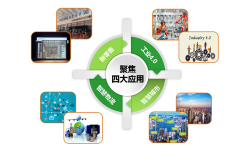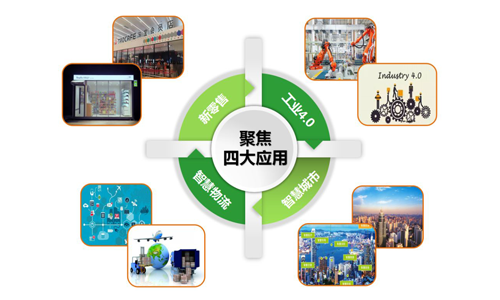
How does RFID technology become the driving force of the intelligent industry
[ad_1]
The Internet of Things information is no longer unfamiliar, and RFID technology has become an important perception layer of the Internet of Things. In this era of the Internet of Things, RFID technology is one of the key technologies for data connection and data communication. Before understanding RFID technology, we must first understand the composition of RFID. RFID systems include: electronic tags (TAG), readers (Reader), computers and their application software. The main function of the electronic tag is to complete communication with the radio frequency antenna; the main function of the reader is to read or write the information of the electronic tag; the function of the computer and application software is to connect to the external meter through the communication interface of the reader Computer, or connected to the host computer system, so as to realize the exchange of data.

RFID technology, also known as radio frequency identification technology, is a communication technology that uses radio signals to identify specific targets and read and write related data without the need to establish mechanical or optical contact between the identification system and specific targets. Compared with the barcode technology, which is also the representative of information recognition technology, RFID has more advantages and broader prospects, and it has been widely used in various industries.
1. Batch reading
In terms of information reading, RFID does not need to be visible or obstructed by objects. It only needs to be within the range of the RFID reader to complete the reading and writing of RFID data. RFID also has the advantage of mass data reading, which can quickly read more than thousands of RFID tag data at a time, with extremely high efficiency.
2. Flexible form
RFID electronic tags can be made into different shapes and sizes, and there is no need to use fixed materials and attachment methods for accurate reading. Nowadays, with the advancement of technology, more compact and unique RFID tags have been introduced to meet the information identification needs of different types of industries and products.
3Wide reading range
The reading range of RFID data information can be increased to varying degrees according to the power of the reader and the antenna, and accurate reading within ten meters can be achieved, which has a range advantage compared to traditional identification technology.
4. High security
The RFID tag can encrypt the information of the chip, and at the same time, the RFID tag is unique and cannot be copied. By writing specific information on the RFID tag and binding it with the item, it can play a role in anti-counterfeiting and effectively prevent the appearance of counterfeit and shoddy products.
5. Long-lasting durability
RFID has the characteristics of waterproof, alcohol-proof, anti-corrosion, anti-magnetic, high temperature resistance, anti-pollution, etc., and can maintain normal operation in harsh environments. Moreover, different RFID tags can store information for several years to several decades and are very durable.
6. Data storage
The capacity of one-dimensional barcode is 50Bytes, the maximum capacity of two-dimensional barcode can store 2953Bytes, and the maximum capacity of RFID is MegaBytes. With the development of memory carriers, the capacity of data storage also has a trend of continuous expansion. RFID can also repeatedly add, modify, and delete the data stored in the RFID tag to facilitate the update of information.
The carrier of RFID technology generally has the characteristics of waterproof, antimagnetic, high temperature resistance, etc., to ensure the stability of the application of radio frequency identification technology. RFID technology has advantages in real-time data update, information storage, service life, work efficiency, and safety. Under the premise of reducing manpower, material resources, and financial resources, RFID can update existing data more conveniently and make work more convenient. RFID technology stores information according to computers, etc., up to several megabytes, and can store a large amount of information to ensure the smooth progress of the work. RFID technology has a long service life and can be reused as long as the staff pay attention to protection.
With the rapid development of new-generation high-tech such as the Internet of Things, big data, cloud computing, artificial intelligence, and 5G, RFID technology has also achieved unprecedented development. RFID technology has changed the inconvenience of information processing in the past, realized multiple targets at the same time, and greatly improved work efficiency; electronic tags have unique codes, which are not easy to forge and have high security. RFID technology has been recognized and used in many fields. It is believed that in the near future, RFID technology will penetrate into all aspects of people’s daily life and work, bring greater social and economic benefits, and make our lives better. .
[ad_2]


